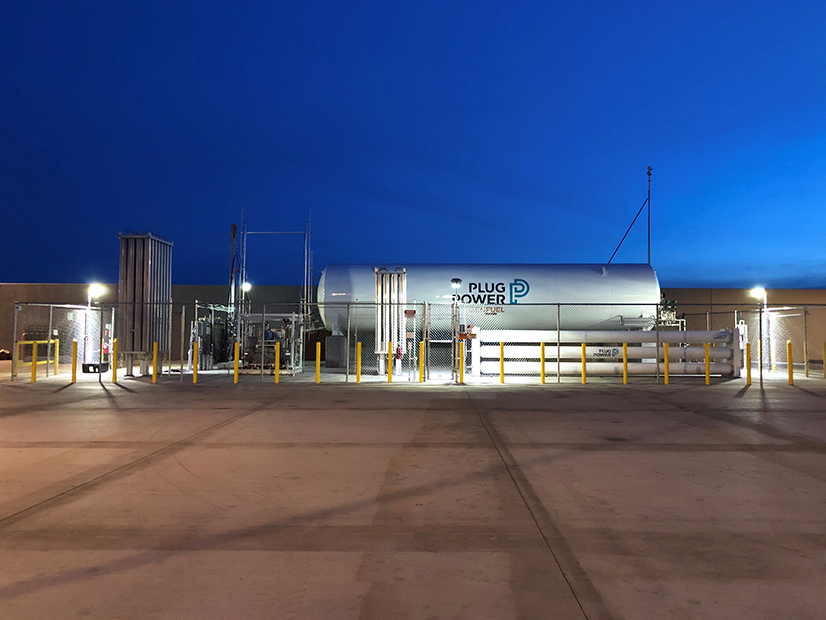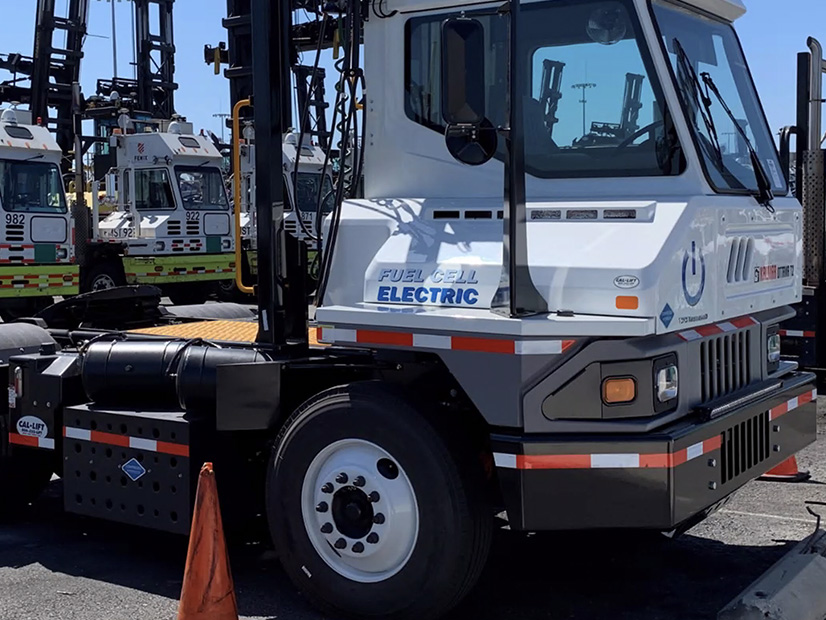
The gulf between the promise of hydrogen and the technology to make enough of it to help safely decarbonize power grids, industry and transportation in just a few decades is a challenge just now coming into public focus.
The outline of the potential dilemma emerged quickly during the Sept. 30 Future of Green Hydrogen webinar organized by the Environmental Business Council of New England
The virtual conference featured a policy and economic analyst, a hydrogen safety expert and a university researcher focusing on hydrogen as a potential pipeline fuel.
Speakers represented companies already investing in hydrogen technologies, including Toyota, (NYSE: TM), National Grid (NYSE: NGG) and Plug Power (NASDAQ: PLUG), who described their efforts to harness hydrogen’s potential.
Paul Hibbard, principal at the Analysis Group, said green hydrogen has the potential to be “the Holy Grail of civilization,” as nations urgently work to reduce carbon emissions to net zero by 2050.
“It’s not going to be easy,” Hibbard stressed. “The transition timelines that we’re talking about are completely inconceivable relative to the pace of change that we’re used to in the sector. And the technological solutions for decarbonization are not readily apparent.”
“Why are we focusing on hydrogen? In my view, being completely honest — and it’s not the sort of thing you want to say in public — it’s because it looks like a fossil fuel. When you think of all the potential decarbonization solutions that are being discussed, a lot of them don’t really look like the world we currently live in. Hydrogen absolutely does.”
Hibbard said a lot of the decarbonization will be based on electrifying automobiles and trucking, switching to heat pumps for heating and cooling in new construction, and moving toward a “potential trade-out of existing heating technologies” in existing homes and buildings.
“When you look at what the states are proposing and what’s in the pipeline from a decarbonization perspective in the electric sector … [you see] rapid increases in the demand for electricity on the one hand and changing the shape of electricity demand on the other as the sector acts as something of a sponge for greenhouse gases and transportation and building sectors,” he said.
In other words, that decarbonization scenario relies heavily on the electric grid, and one based primarily on renewable generation. And that’s the problem.
“That will significantly change the demand profile, and within 10 years the New York-New England region will become a winter peaking system, meaning power demand will peak when solar generation is out of the picture.” Offshore wind and imported Canadian hydropower and storage would be crucial in this scenario, he added.
The harder question to answer, Hillard said, will be whether the regional grid could meet the growing demand “without some form of thermal generation to back it up,” such as gas turbines burning hydrogen or fuel cells generating power by combining hydrogen with oxygen in ambient air.
Safety First
Then there is the question of learning how to handle hydrogen safely.
Nick Barilo, executive director of the Center for Hydrogen Safety at the American Institute of Chemical Engineers, said hydrogen as a general use fuel poses significant problems.
Citing accidents over the decades, including the Challenger space shuttle explosion in 1986, Barilo said the industry has developed strong safety protocols but that the public has no experience with hydrogen and plenty of misconceptions.
“Some of the things that we have run into so far are apathy, fear and the general misconception that it’s just like any other flammable gas,” he said.
But hydrogen has no color, is flammable at a wider range of temperatures and lower concentrations than methane and propane, and burns with a pale blue flame that is hard to detect, said Barilo.
Another problem that many may be unaware of, he said, is that the industry does not yet have a good “odorant” to add to hydrogen as it did to natural gas decades ago.
“The key for safety … [is] that it’s like any other flammable gas. You need to identify and eliminate those hazards and find mitigation measures,” Barilo said. “System integrity is critical. It’s a small molecule so that becomes even more important. Proper ventilation is a key to safety. And then managing discharges, detecting, and isolating leaks and not the least of which is training personnel. … There are a lot of things to think about.”
Devinder Mahajan, director of Stony Brook University’s Institute of Gas Innovation and Technology, said “there is a pretty solid foundation to move to hydrogen power … using methane in the mix.”
Mixing green hydrogen with methane, presumably to feed gas turbines, “basically addresses the intermittency of power generation from renewables,” he said.
The major challenge will be developing the technologies to lower the cost of producing hydrogen through electrolysis and then moving the gas to where it is needed.
Using the nation’s existing gas lines is one of the keys to an economical transition away from methane to hydrogen, said Mahajan.
“Do we just abandon this $1 trillion infrastructure that is already in place by not using any gas or can we repurpose this infrastructure for hydrogen? I think that is the question, and I think there is a fairly simple no-brainer answer. Why would you abandon a $1 trillion infrastructure that the public paid for, and just say let’s go on to something else that we don’t know anything about?”
As for hydrogen’s destructive impact on existing natural gas lines, Mahajan said federal labs and his institute have been working on detection technologies to enable utilities and pipeline companies to develop an early enough warning of such leaks to make a “business decision” about using an existing line.
No Silver Bullet
One company with some experience moving hydrogen is National Grid, which sees hydrogen as a “zero-carbon energy carrier” rather than a fuel.
“The decarbonization train is leaving the station, and hydrogen is definitely one of the engines,” said Christopher Cavanagh, and engineer with National Grid.
“We have a high degree of confidence that hydrogen can be safely blended with natural gas today. There may be changes, and we’re trying to figure out what exactly those are now. And we are not the only ones proposing this.
“Our experience with hydrogen has been pretty substantial. We produced hydrogen as part of our synthetic natural gas production during the energy crunch in the ’70s and ’80s,” said Cavanagh.
The most important question, he said, is how green hydrogen will be sourced. “We’re going to produce hydrogen onsite in a distributed manner, from either onsite renewables or from purchased renewable power.
“New York state is supporting that, but it’s also supporting new centralized hydrogen production facilities,” he added.
Plug Power, a N.Y.-based fuel cell company that also builds hydrolysis equipment to make hydrogen, announced in February that it would build a plant in western New York to produced 45 metric tons of liquefied green hydrogen a day.
Swarna Arza, vice president and operations general manager at Plug Power, said her company’s vision for the future is one “where we create the energy, we store the energy, and then when we have a downtime, we can use that same energy … and create the electricity that can substitute for any intermittent energy sources like wind.” She said Plug Power’s hydrolysis technology under development produces significantly more hydrogen than standard hydrolysis equipment.
Plug Power is working with Toyota on a hydrogen project in California, Arza said.

Toyota, unlike major U.S. automakers, is already producing and selling fuel cell cars. In the U.S., Toyota’s Mirai fuel cell model is available in California, where 52 hydrogen refueling stations have been built. Refueling time is five minutes.
Jacquelyn Birdsall, a senior engineering manager with Toyota’s fuel cell integration group, said the company’s goal is to reduce the CO2 emissions of its fleet 90% by 2050 compared to 2010 levels and that fuel cells vehicles are part of the strategy to accomplish that.
“Toyota believes in what we call a portfolio of solutions. I think that you’ve heard this from other members [today] as well. There’s not really one silver bullet; there’s not one great solution. It takes a combination of all [technologies].
“For us, that means hybrid, plug in hybrid, battery electric and fuel cell electric, she said.
Toyota’s progress at moving from gasoline to electric vehicles might be seen as an example of the road ahead for the massive electrification goals of industrial nations around the world. It will be expensive and take time.
Birdsall pointed to the Prius hybrid as a starting point. Introduced in 1997, Prius sales were initially slow, taking 10 years for the first one million sales. Today, Toyota sells 1.5 million hybrids annually around the globe.
“We sell more electrified vehicles than the rest of the auto industry combined,” she said. 
Sales of Toyota’s Mirai, first introduced in 2014 and updated this year, have been slow. And the company more recently built 10 fuel cell electric Class 8 heavy-duty semi-trucks with Kenworth, each equipped with a 560-horsepower electric motor, Birdsall said. The trucks can haul 80,000 pounds and have a 300-mile range between fill-ups. They are in operation around the ports in Los Angeles.
“We use about 10 times the amount of hydrogen in a truck that we do in a light-duty vehicle. So that increase in the fuel demand is driving down the cost of the hydrogen,” Birdsall said.
“However, in order to get the cost of the trucks themselves down, we need the volume of the fuel cell stacks, which comes from the light-duty market. So, we need to sell the light-duty vehicles as well to build more hydrogen … fuel cell stacks to drive down the cost of the technology itself.”
